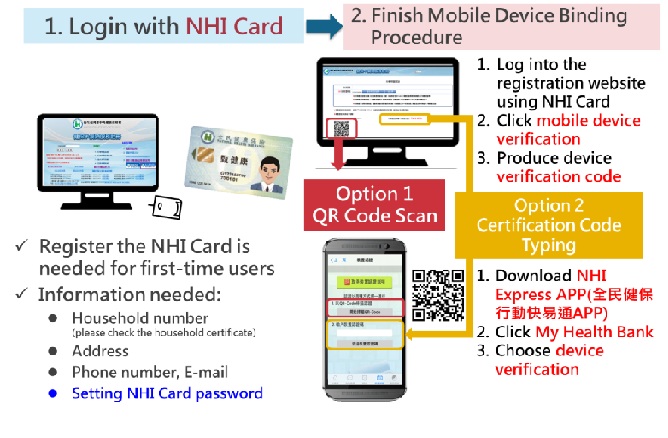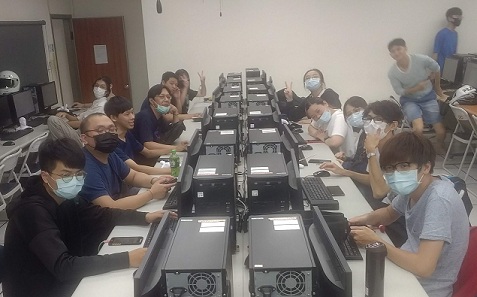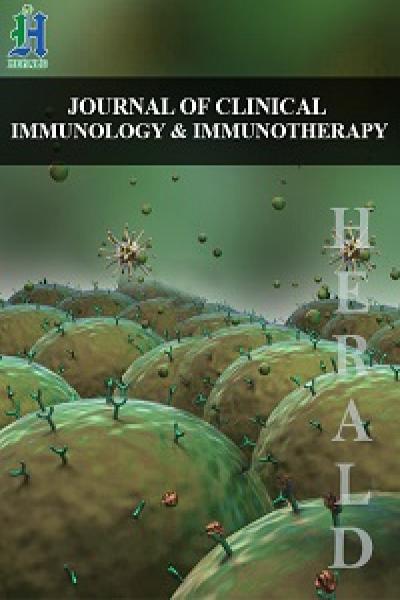
Observations on Accomplished COVID-19 School Reopen in Taiwan
*Corresponding Author(s):
Fang Lin ChaoDepartment Of Industrial Design, Chaoyang University Of Technology, Taiwan
Email:flin@cyut.edu.tw
INTRODUCTION
Since January 2020, the ongoing expansion of the Covid-19 continues to create various socio-relational upheavals [1]. Medical institutions responded to these situations, depending on their roles and their management types [2]. The clinical assessment of patients with basic immunology is pivotal in medication and prevention strategies for minimizing morbidity. Despite the widespread use of electronic health records (EHR), people still lack reliable information on many therapeutic aspects due to a lack of efficient access to stored data [3]. False alarm is preferable to omission. Civic-minded behaviors and an internal health locus of control should be encouraged [4].
The difficult decision after the implementation of home segregation is-how to restart? This semester, the school delayed for two weeks, and the 18-week course has completed from March 2nd to July 10th. Many students and teachers will question: "The semester is finally over! Teachers and students have not been infected." How to control to be able to restart the school safely? Many students shuttle in and out on the campus of the university. On the job students work outside during the day (McDonald's, factory, or shop) and contact many people, and there is also a risk of infection. Chao [5] discussed mask usage during COVID-19, which mainly aimed at the possibility of contact infection of masks and the development of four improved designs [6]. For more discussion on the school restart (March-July 2020) period in Taiwan, three levels of epidemic control (Government, Schools, and Individuals) present in bellow; some reflections and observations also included audiences' understanding.
GOVERNMENT LEVEL
By January 5th, 2020, the Taiwan Centers for Disease Control (TCDC) began monitoring all individuals who had traveled to Wuhan. On March 14th, people returning Taiwan had to quarantine at home for 14 days; and raised the global travel notice to level 3. Local governments cooperated with the CECC to enforce the quarantine. Local officers visited people in quarantine and confirmed by location tracking of personal cell phones, and imposed high fines on violators [7] the Line Bot system (Disease Containment Expert) developed jointly by Line and HTC Corporation. Ones under self-quarantine at home can voluntarily report their health status and complete identity verification.
January is the Chinese New Year, and most public visits were cancelled. At the same time, the TCDC has requested to avoid gatherings with more than 100 people. Therefore, public performances and movie venues were suspended, and the schools start delayed by two weeks. There is no restriction on the movement of people in different cities or regions. This non-mandatory self-isolation at home mainly relies on the adjustment of personal awareness and living habits. CECC announced to suspend the transit passengers to reduce the chance of disease transmission as most countries take similar actions, most tour groups re stopped. Because of the mandatory 14 day quarantine after returning from abroad, it had reduced the willingness to travel overseas [8].
A personal?based rationing system for face masks distribution started on February 6th. Citizens went to the particular pharmacy to buy with your "Health Insurance Card." The pharmacy's mask control system allows each person to buy three adult masks per week, and it cannot be repurchased within seven days. To diversify the purchase crowd, the even/ odd number of the ID number arranged for the public. In this rather harsh way, the average person must use a mask for more than two days. A mobile phone application (Mask Finder [9]) helped citizens locate supply points and availability.
The purpose is to maintain medical personnel with adequate medical protection and ensure that everyone can obtain essential protection and not be subjected to price gouging. If you find that many people are lining up while driving through the city, you know that they are lining up in front of the pharmacy. The queue time in March even exceeded half an hour. Pharmacists are also under pressure from being infected and will ask the public to enter individually instead of gathering indoors [10]. Improved mobile APP (mask ordering system) also developed for people such as office workers and students. People who have Resident Certificate and NHI Card can order masks via the Name-Based System at the eMask website (Figure 1).

Figure 1: Mask reservation using a phone with eMask [7].
SCHOOLS AND INDIVIDUALS LEVEL
Reopening schools poses a particular challenge worldwide. To the school's date reopened, 55 cases were attributable to community transmission, plus another 31 from the warship Panshih, and 343 imported cases (Taiwanese abroad returning home). The Ministry of Education in Taiwan established general guidelines for campuses. The guidelines delineated creating a task force; school-based risk screening was based on travel history, contacts, and clusters. Schools need maintained social etiquette and observe social distancing. Figure 2 shows a computer course for 32 on-job students in the evening.
The cleaning material and hygiene measures, ventilation, a process for reporting suspected cases, and policies on school closing were pre-organized. A school should be closed for 14 days if it had two or more confirmed cases. One university was temporarily closed in May and safely reopened after 14 days of quarantine. Precise access control with contact tracing and quarantine is essential. 
Figure 2: Computer course for on-job students.
The practical instructions also reveal for participants.
- Teachers and students are in close contact, and they required wearing masks. Many large-scale gatherings were canceled or held outdoors. Besides, the school arranged distance teaching; once the school is suspended, it will be replaced by distance teaching.
- The preparation of public items: for example, the teacher's microphone in class may be the source of infection, so the teacher prepared it by himself. The keyboards of all classrooms cleaned, and there is disinfected alcohol in each room.
- There are only a single entrance and exit for building, where the body temperature will be measured, and a passing sign will be given. If the temperature exceeds, students will be required to rest at home.
- The school's restaurant has acrylic partitions to avoid saliva transmission with each other during meals; tableware was self-prepared to reduce shared utensils.
- On April 5th, the school had a four-day vacation, many people gathered in popular scenic areas such as Kenting Park. Using phone tracking, the control center informed the school to request these students to return detailed information in the dense crowd.
To track the attendance, the teacher "checked" in each class with a mobile pass code. After an outbreak in warship Panshih, the school was notified that a student was in the same restaurant as the infected person. This student was then asked for isolation [11,12].
CONCLUSION
- The epidemic prevention needs to pay full attention to the whole and the details. The implementation of the features allows the strategy to reach all members of society. Quantitative resources and big-data supported the public following the policy.
- In addition to the task force participants, the self-management of the public is an essential factor. The non-compulsory and flexible movement freedom can still achieve the goal of epidemic prevention and control.
- After Taiwan closed its borders, with the medical system's full support, the infection rate has declined. Digital technology can support accurate tracking and is a must-have tool when an infection occurs.
REFERENCES
- Yang X, Yu Y, Xu J, Shu H, Xia J, et al. (2020) Clinical course and outcomes of critically ill patients with SARS-CoV-2 pneumonia in Wuhan, China: A single-centered, retrospective, observational study. Lancet Respir Med 8: e26.
- Huang C, Wang Y, Li X, Ren L, Zhao J, et al. (2020) Clinical features of patients infected with 2019 novel coronavirus in Wuhan, China. Lancet 395: 497-506.
- Naviaux AF (2020) Response-Ability Facing Covid-19: A matter of Psyche, Behavior, and Civism. J Clin Immunol Immunother 6: 021.
- Martín EV (2020) Digital Technology in the Covid-19 Pandemic. J Clin Immunol Immunother 6: 020.
- Chao FL (2020) Adolescents’ face mask usage and contact transmission in novel Coronavirus. Journal of Public Health Research 9: 1771.
- Chao FL (2020) Face mask designs following novel Coronavirus. Journal of Public Health Research 9: 1770.
- https://www.cdc.gov.tw/En
- Huang IYF (2020) Fighting against COVID?19 through government Initiatives and collaborative governance: Taiwan experience. Public Administration Review.
- https://mask.pdis.nat.gov.tw
- Ou HT, Kao YH (2020) Community pharmacists in Taiwan at the frontline against the novel coronavirus pandemic: Gatekeepers for the rationing of personal protective equipment. Ann Intern Med.
- Lee TL (2020) Legal preparedness as part of COVID-19 response: The first 100 days in Taiwan. BMJ Global Health 5: e002608.
- Cheng SY, Wang CJ, Shen ACT, Chang SC (2020) How to safely reopen colleges and universities during COVID-19: Experiences from Taiwan. Annals of Internal Medicine.
Citation: Chao FL (2020) Observations on Accomplished COVID-19 School Reopen in Taiwan. J Clin Immunol Immunother 6: 033.
Copyright: © 2020 Fang Lin Chao, et al. This is an open-access article distributed under the terms of the Creative Commons Attribution License, which permits unrestricted use, distribution, and reproduction in any medium, provided the original author and source are credited.

